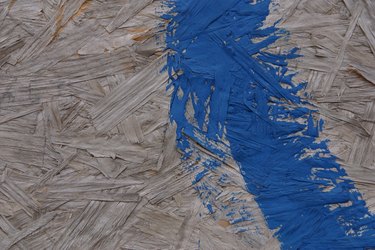Things You'll Need
Butter knife
Rag
X-acto knife
Paint
Brushes
Turpentine

While painting on canvas has its advantages, such as the absorption of paint into the canvas and the texture, it also presents the painter with a variety of challenges. For example, if you make an error or simply want to change an element of the painting, it can seem more difficult than if you were working in another medium on another type of surface. However, it is still possible to fix mistakes in a canvas painting.
Step 1
Check to see if the paint is completely dry. Oil paint takes several days to dry, and the method of removal will depend on the state of your painting.
Video of the Day
Step 2
Remove any wet paint with the dull side of a butter knife, blotting the remaining paint with a rag to dry it more quickly. If the paint is still wet, consider blending it with surrounding colors to make the mistake less noticeable, letting the paint dry and painting over it.
Step 3
Remove thick, dry paint by carefully chipping away at it with the sharp end of an X-acto knife. If the paint is not too thick, consider painting over it with another color, or simply reworking what you have already done to hide the mistake.
Step 4
Dab a corner of the rag in turpentine. Be careful not to get turpentine on your skin or clothes, and use it only in a well-ventilated room. Blot the dry paint of your mistake with turpentine until the paint dissolves, and let it dry.
Warning
Only use turpentine in a well-ventilated space; do not make contact with skin, eyes or clothing.
Video of the Day